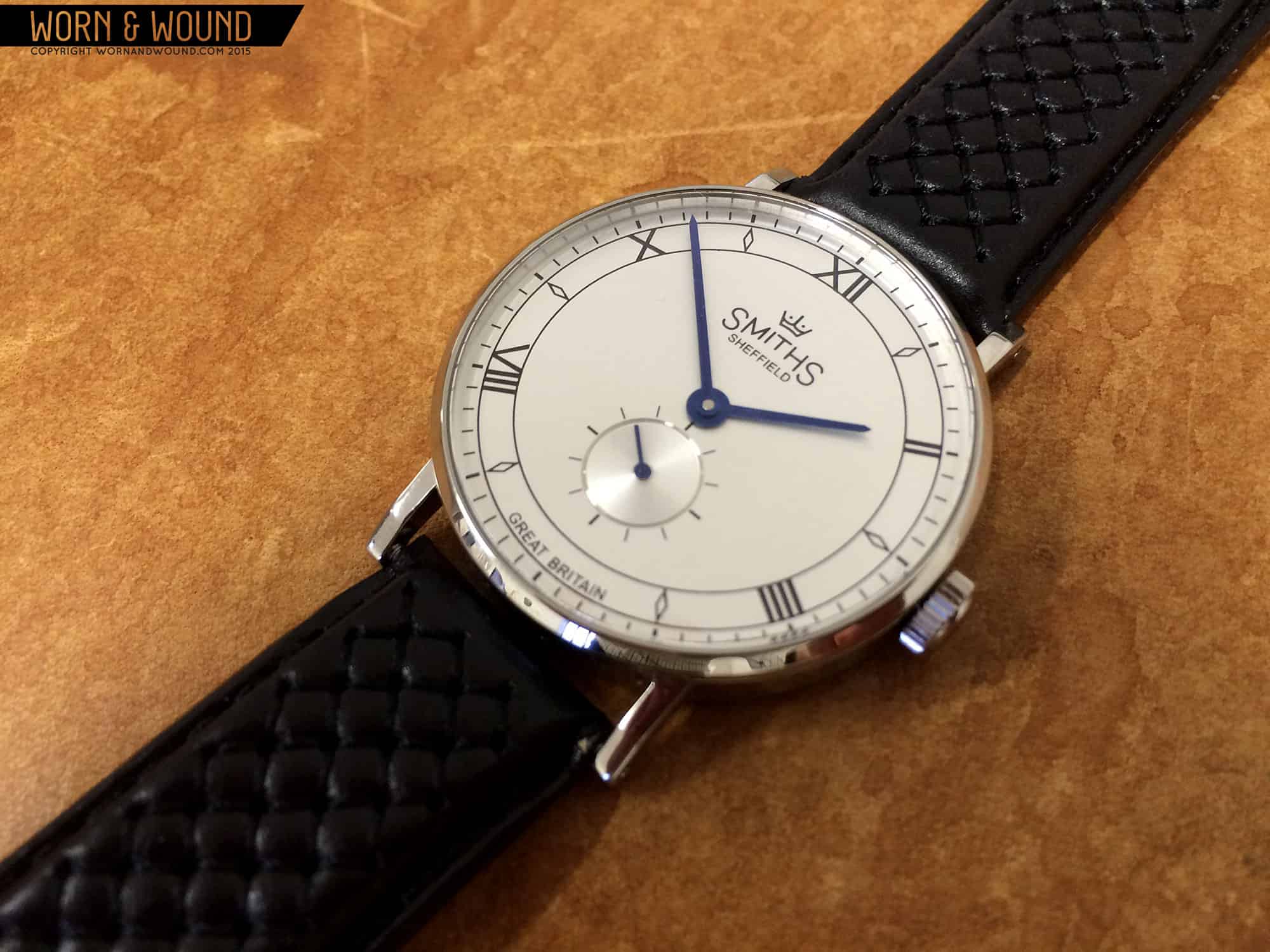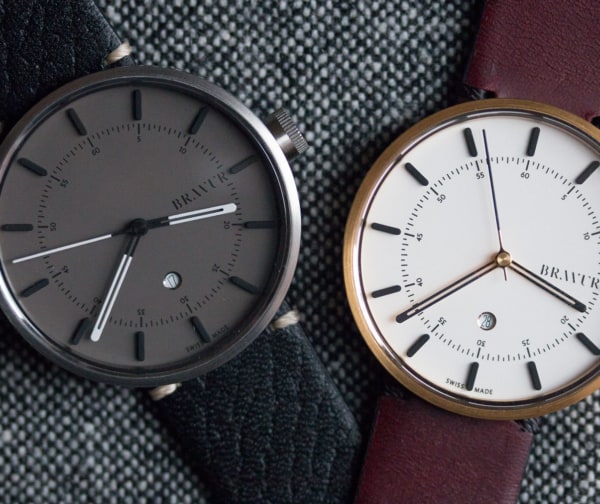If you were writing a TV commercial (or as we old-fashioned Brits still call them, adverts) for the PRS-35, it might go a bit like this…
January 1955. Opens on a narrow, dark London street, fog swirling around our hero as he walks slowly into the yellow pools of light from each gaslight. The collar of his Burberry mac is turned up against the cold. The red tip of his cigarette glows as he cups his hands against each shop windowglass, peering inside. Finally, he catches a glimpse of what he’s looking for behind the rain-streaked glass. There it is, against a background of deep, green baize in the watchmaker’s window. His new watch. Simple, clean, fitting for the times. The camera cuts from the window to his face. He smiles, grinds out his cigarette and we see his back as the shop bell pings and he pushes open the door.
Fast forward to 2014 where the dark London street is sodium-lit, packed with ‘cino chains, hovering parking wardens and the last independent watchmaker shut in 1968. Progress ain’t always a good thing.
Even though it was launched late last year, that old world is the one the PRS-35 fits into rather nicely. Rather like it’s cushion-cased cousin, the PRS-36, it’s a bit of a fifties throw-back. It’s plain, simple and with a hand-wound new old-stock Peseux 7040 movement, this is a watch from the days when a gentleman had just one watch and wore it for everything.
However, unlike the PRS-36, the 35 has a plain, round case keeping everything together. It’s polished on every surface with a slightly chamfered bezel and delicate, partially-stepped 20mm lugs. Everything is 316L stainless steel – the same stuff Rolex used up until 2001. It’s just 38mm, so you’re fine if don’t have wrists like a 1950’s London gangland thug. It won’t look like it’s wearing you.
Inside the stainless case is the same movement as its relative. It’s a Peseux 7040 with Geneva stripes, all visible through the screw-down display back. This is a movement worth looking at too. Blued screws, three movement plates, seventeen jewels and no automatic weight to get in the way of the view. There’s a real elegance and simplicity to this motor. At 21,600bph, it sounds as vintage as it looks, although the review sample kept distinctly non-vintage excellent time. You get to wind it yourself for the full ’50s experience.
Flipping the PRS-35 over, it’s immediately obvious that the brushed silver dial is completely different in design from the ’36. Where the ’36 uses Arabic numerals at each hour point of the dial, the PRS-35 goes Roman. The sans-serif numerals sit at 12, 2, 4, 8 and 10, with slim diamond markers at 1, 3, 5, 7, 9 and 11. Just below the 12 numeral is the Smiths logo, sitting atop Eddie Platts’ (Timefactors’ owner) proud Sheffield mark. Just under the subsidiary seconds dial is the Great Britain legend. No mistaking where this watch hales from.
Back to that subsidiary seconds dial… The seconds markers, for each group of five, are on the outside of the dial, giving it an effect a little like one of those ’50s sunburst clocks. Very in-keeping.
The hands are slim, with the minute hand reaching just to the outside edge of the dial’s minute rail. The hour hand stops a few fractions of an inch short of its inner edge. There’s no lume on the blued-steel hands, nor the dial itself. If you want to tell the time in the dark you’ll have to climb out of bed to light the gaslight.
You peer at all this through the double-domed, bombé sapphire glass. Everything’s easy to see too. Eddie’s had the crystal treated with anti-reflective coating on its underside.
Despite the retro elegance, you won’t need to baby your PRS-35. It’ll survive hanging around near your distinctly non-1950s Macbook with a 4,800 A/m rating and it’ll keep the water out until you hit 50 metres. Like its ’50s forebears, it’s a proper watch for wearing everyday without worrying.
Timefactors has a knack of rolling out splendid, well-made watches at completely realistic prices. Looks like they’ve managed another one with the PRS-35.









 Featured Videos
Featured Videos












